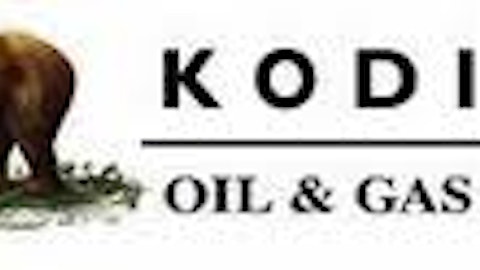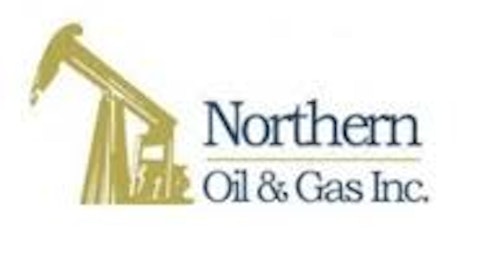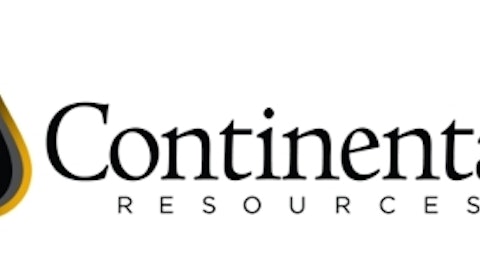It is every entrepreneur’s dream to convert things that people do not want anymore into hot selling products. I am not talking about a company in the recycling industry, but an oil and natural gas producer. Denbury Resources Inc. (NYSE:DNR) is the largest oil and natural gas producer in both Mississippi and Montana. It is focused on carbon dioxide-enhanced tertiary oil recovery, which produces oil from conventional fields that was previously unrecoverable via primary and secondary recovery methods.
Why other competitors are unable to do the same?
The key to Denbury Resources Inc. (NYSE:DNR)’ competitive advantage lies in having both a strategic supply source of carbon dioxide and a distribution network of more than a thousand miles of pipelines, allowing it to deliver carbon dioxide to its oil fields at significantly lower costs.
Denbury Resources Inc. (NYSE:DNR) has approximately 6.1 trillion cubic feet (TCF) of carbon dioxide proved reserves in Jackson Dome as of the end of 2012, which represented the largest and purest source of carbon dioxide east of the Mississippi River. Management estimates that it has sufficient carbon dioxide to support its growth in the Gulf Coast region for the next decade until 2022. In late 2012, it added about 1.3 TCF of carbon dioxide proved reserves in the Rocky Mountain region through an asset exchange with Exxon Mobil Corporation (NYSE:XOM), to allay any concerns over any shortage in carbon dioxide. In addition, Denbury Resources Inc. (NYSE:DNR)’ proprietary pipeline network also gives it an edge, given that regulatory approval is needed to build new pipelines. The Federal Energy Regulatory Commission (FERC) and the individual state agencies govern the interstate and intrastate pipelines respectively.
Lower finding & development costs relative to peers
While cost efficiency is important for all companies, it becomes even more critical for companies selling commodity products subject to wild price fluctuations. This is exactly the case for oil & natural gas producers like Denbury Resources Inc. (NYSE:DNR). According to its most recent investor presentation, Denbury Resources Inc. (NYSE:DNR) has the lowest three year average finding and development costs among its peers at about $18.42 per barrel of oil equivalent.
Finding costs are naturally low, as Denbury Resources is targeting mature oil fields with proven reserves, instead of trying its luck with new oil fields with uncertain potential like its peers. Development costs are also manageable, because Denbury Resources is buying from oil field owners who have already maximized the potential of their oil fields with their own recovery methods.
Looking forward
Management guided that its fiscal 2013 production should hit the top half of its forecast of between 68.7 and 71.7 million barrels of oil equivalent on better than expected output numbers, according to its most recent earnings conference call. In addition to strong operating data, Denbury Resources also worked hard at rewarding shareholders with capital return initiatives, buying back close to 36 million shares since October 2011. It still has about $229 million remaining from its share repurchase authorization as of the end of April.
Peer comparison
Denbury Resources’ peers include Newfield Exploration Co. (NYSE:NFX) and Whiting Petroleum Corp (NYSE:WLL). Denbury Resources is valued at a premium to its peers with a forward P/E of 14. In comparison, Newfield Exploration Co. (NYSE:NFX) and Whiting Petroleum Corp (NYSE:WLL) are valued by the market at 9.8 and 11.8 times forward P/E.
Newfield Exploration Co. (NYSE:NFX) is an independent energy company that primarily operates in the Mid-Continent, the Rocky Mountains and onshore Texas domestically (and in Malaysia and China internationally). The key issue for Newfield Exploration Co. (NYSE:NFX) is its transition from an international natural gas focused company to a domestic oil play. It has been plagued by concerns over lackluster production growth in 2012 and the quality of resources with respect to new investments, but it responded strongly with 30% year-on-year growth in domestic production for the first quarter of fiscal 2013. Despite this, I prefer not to stay invested in a company that is still in transition mode. Management’s fiscal 2013 guidance for production growth of between -6.0% and +0.6% is reflective of my view that it will take some time to see the fruits of the transformation.
Whiting Petroleum Corp (NYSE:WLL) operates primarily in the Rocky Mountain, Permian Basin, Mid-Continent, Michigan and Gulf Coast regions of the U.S. Besides sharing a similar geographic focus, with Denbury Resources having close to half of its proved resources in the Rocky Mountains region, Whiting Petroleum Corp (NYSE:WLL) also operates one of the largest domestic enhanced oil recovery projects at its North Ward Estes field in Texas. While management guided healthy production growth of between 11.9% and 15.9% for fiscal 2013, I am worried about declining inventory levels at its mature Sanish field in the Williston Basin. Furthermore, it might incur significantly higher finding & development costs (compared with the Sanish field), in its efforts to maintain growth in proved reserves with new fields in other parts of the Williston Basin.
Conclusion
The issue with investing in good companies is that they are usually priced to perfection, given that everyone knows that they have a competitive advantage over their peers. I like Denbury Resources for its ownership of a strategic source of carbon dioxide, its proprietary pipeline distribution network and relatively low finding & development costs vis-à-vis peers. But I will have to give this stock a pass at current valuations and wait for a pullback in its share price.
Mark Lin has no position in any stocks mentioned. The Motley Fool owns shares of Denbury Resources. Mark is a member of The Motley Fool Blog Network — entries represent the personal opinion of the blogger and are not formally edited.
The article Is This Company’s Competitive Advantage Factored Into the Share Price? originally appeared on Fool.com is written by Mark Lin.
Copyright © 1995 – 2013 The Motley Fool, LLC. All rights reserved. The Motley Fool has a disclosure policy.




